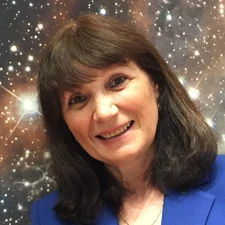Mioara Mandea

The 2018 Petrus Peregrinus Medal is awarded to Mioara Mandea for defining the nature of the geomagnetic field, particularly abrupt changes in secular variation known as geomagnetic jerks, and for advancing observatory and satellite data collection and analysis.
Mioara Mandea is a leader in the collection, analysis and interpretation of geomagnetic data from all possible sources, including historical archives, magnetic observatories and satellites. She uses state-of-the-art methods to extract information from these raw data about the workings of Earth’s core dynamo. In particular, she has recognised sub-decadal changes in these data (known as geomagnetic jerks) that are of fundamental importance for understanding core dynamics. The definition of these changes is challenging and ultimately rests both on the quality of the data and the innovations in analysis, areas that have been a focus of Mandea’s scientific career.
Mandea has improved the precision and accuracy of observatory measurements and helped pioneer the concept of ‘virtual observatories’ using satellite data to further studies of short-term secular variation. Her data collection prowess has led to signal contributions to the World Digital Magnetic Anomaly Map, a fundamental community resource.
Mandea’s contributions extend beyond geomagnetism. She has explored satellite gravity data to learn about processes at the core-mantle boundary. Together with her co-workers, she has proposed mass redistribution at the core-mantle boundary and secondary flow in the outer core as a new mechanism to simultaneously explain observed variations of gravimetric and magnetic signals at Earth’s surface. She was also part of the first team that used newly acquired satellite gravity gradient data for directly detecting the present-day density variation of the lower mantle, which had previously only indirectly been inferred from seismic wave velocities. Her curiosity and associated contributions have no bounds, as she has explored the enigmatic Beattie magnetic anomaly of South Africa, the lithosphere and atmosphere of the Arctic region, earthquake detection with satellite magnetic data and the magnetic signature of impact structures on Mars and the Moon. In bridging critical data collection, analysis and interpretation efforts, Mandea serves as a role model for future Earth scientists and continuing community-wide efforts to understand our planet.
